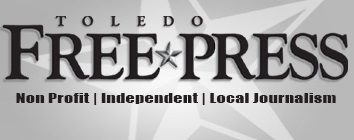This week, Rolling Stone’s Matt Taibbi wrote an article detailing the sequester cut — what they mean and how we got to this point. Politics aside, Taibbi is a fantastic writer who received a lot of notoriety after covering the failings of Wall Street in 2008-09, and who wrote scathing articles critiquing both the Bush and the Obama administrations for allowing those events to happen and then bailing out those who put us in the mess.
 While the term has appeared on the news a lot over the past week, many people are still confused as to what exactly the sequester is and how we got to this point. The idea of the sequester was first bounced around in 2011, back when the fiscal cliff was a still a big deal. Democrats wanted the wealthy to “pay their fair share,” and Republicans stood their ground saying they would not approve tax increases without substantial spending cuts.
While the term has appeared on the news a lot over the past week, many people are still confused as to what exactly the sequester is and how we got to this point. The idea of the sequester was first bounced around in 2011, back when the fiscal cliff was a still a big deal. Democrats wanted the wealthy to “pay their fair share,” and Republicans stood their ground saying they would not approve tax increases without substantial spending cuts.
In response, the White House proposed the sequester, thinking that a deal would be worked out down the road. Once 2013 began, Democrats got the 2 percent FICA tax increase they wanted, and at the time of this writing we are days away from the sequester deadline. Be sure to check out the Bipartisan Policy Center for some great information and history on the sequester.
Now Democrats are stepping up saying this would be a catastrophe and the sequester cuts were never intended to actually happen but were more a way to delay spending cuts until a time when a more sustainable compromise could be reached (code for Democrats saying they were hoping they would have taken a majority in the House and Senate during the 2012 elections so they could do whatever they wanted).
Taibbi makes some great points, especially that $85 billion in cuts per year (some reports actually read $109 billion per year) is not all that drastic, reminding us that the Federal Reserve gave Citigroup more than that in one month of 2009 alone.
Putting the cuts in perspective, according to the proposed 2013 White House Budget, total outlays of the federal government would total more than $41 trillion between now and 2021, when the sequester is set to end. This ends up being a 2.9 percent reduction in spending.
Now let’s look at it from a personal income standpoint. Let’s say you spend an average of $25,000/year, a 2.9 percent cut in your spending would result in a $725 savings per year. My point is that the cuts are not that drastic, but they are a start.
Of course, we have politicians pandering to different crowds saying that these “Draconian cuts” would be devastating to the fragile U.S. economy. Factcheck.org did a great job pointing out many of these inaccuracies.
Even Taibbi points out in his piece that parading Janet Napolitano around saying that several thousand border patrol agents will be laid off in an effort to terrorize those living in border states who have been victimized by cartel violence in recent years is unfair. “We hated it when George Bush threatened us with the specter of terrorist attacks to get what he wanted politically, so we ought to be hating this, too,” he writes.
What Democrats fail to realize is that this is exactly what the Republicans have wanted all along — spending cuts! Fiscal conservatives have been screaming for more than a decade that government spending has gotten out of hand and needs to be reined in, but no substantial cuts have ever been agreed upon. It is also no secret that the Republican Party on a national scale is in a bit of disarray. This could be the event that Republicans use as a “told you so,” for the next several election cycles. However, here is the kicker — the sequester was an idea that the White House was forced to make in response to Republicans standing firm on no tax hikes without spending cuts. If the sequester pans out, it will be a battle for credit that will certainly be fought on national nightly news programs and in long editorials of national newspapers.
Everyone should read up on the sequester. While the cuts are not as broad and severe as you have been led to believe, it is important to know how much is set to be cut, what the impacts are and what the benefits are. History shows us that a more cost-effective, efficient government is great for the economy in the long run, and it is about time we curtailed out-of-control federal spending.
Ben Treece is a 2009 graduate from the University of Miami (Fla.), BBA International Finance and Marketing. He is a partner with Treece Investment Advisory Corp (www.TreeceInvestments.com) and a stockbroker licensed with FINRA, working for Treece Financial Services Corp. The above information is the express opinion of Ben Treece and should not be construed as investment advice or used without outside verification.



